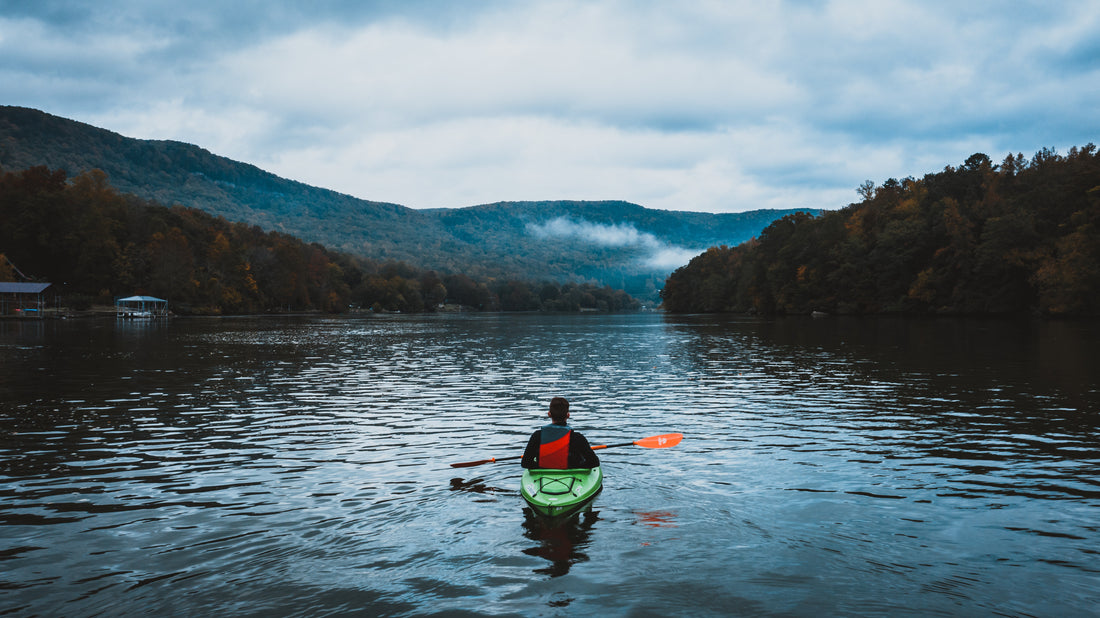How to Choose the Right Life Jacket
Today’s life jackets come in a variety of shapes, sizes, colors, and materials. No matter which life jacket you choose, be sure it’s right for YOU, your planned activities, and the water conditions you expect to encounter.
TRY IT ON!
- Check the manufacturer’s ratings for your size and weight to get started.
- Make sure the life jacket is properly zipped or buckled.
- Raise your arms straight up over your head while wearing your life jacket and grab the shoulder material, gently pulling up.
- If there is excess room above the openings and the life jacket rides up over your chin or face, it does NOT fit properly. A snug fit in these areas signals a properly fitting life jacket.
Fit Facts
- It is extremely important that you choose a properly fitting life jacket.
- Life jackets that are too big will cause the flotation device to push up around your face, which could be dangerous.
- Life jackets that are too small will not be able to keep your body afloat.
Important Reminders
- Make sure your life jacket is U.S. Coast Guard-approved.
- Double-check that your life jacket is appropriate for your favorite boating activities.
- Life jackets meant for adults do not work for children. If you are boating with children, make sure they are wearing properly fitted, child-sized life jackets. Do not buy a life jacket for your child to “grow into.”
- It's state law on recreational vessels underway, children under 13 years old must wear a Coast Guard-approved life jacket unless they are below decks or in an enclosed cabin.
- Life jackets are required to be worn in Class III or higher whitewater rapids.
Inflatable Life Jackets
Inflatable life jackets use compressed air cartridges (CO2) and when deployed, fill the life jacket chamber (bladder) which is packed (folded) in a way that allows the jacket to inflate quickly and efficiently. Inflatables provide 45 percent more buoyancy when inflated. This causes a person to float higher and be more visible when the life jacket is inflated. Always read the owner's manual for instructions and manufacturer contact information.
There are two primary types: manual (inflates with the quick jerk of a cord) or automatic (inflates when submerged in water). Both types can be orally inflated by breathing into an inflation tube/mouthpiece. This is a backup method to inflate the life jacket in case the inflation mechanism malfunctions and gives you the ability to adjust the comfort of the jacket once inflated. The inflation tube is also how you will DEFLATE the life jacket to repack it.
All inflatable life jackets have these components: air holding chamber, source of compressed gas (usually CO2), inflation mechanism to discharge gas from the cylinder into the inflation chamber, inflation tube/mouthpiece to add air to the chamber manually or to deflate, and a manual "jerk to inflate" cord. When wearing any inflatable life jacket, be sure the manual "jerk to inflate" cord is easily accessible.
An automatic inflatable life jacket will automatically inflate when the life jacket is submerged in at least four inches of water, either when a small tablet dissolves in water and causes the inflator to activate or when using an internal water pressure gauge that activates the inflator. In addition to the automatic inflating, every automatic inflatable life jacket has a"jerk to inflate" cord in case the automatic mechanism fails or the life jacket may be inflated by breathing into the inflation tube.
Rearming kits can be purchased through the life jacket manufacturer and many are sold at outdoor/sporting goods stores. Cylinders are single-use only and need to be replaced. Also, cylinders have expiration dates to be mindful of.
Inflatable life jackets are a great option, but also require routine maintenance and regular testing. Please read the label and follow instructions for maintenance and testing. All inflatable life jackets should be tested annually to make sure the inflation mechanism and regular manual inflation of the jacket hold air. We recommend that you deploy your inflatable life jacket in a pool to understand how it fits. feels and inflates. Test it. Try swimming in it. Make sure the harness isn't too tight. Get comfortable blowing air into and releasing air, using the inflation tube. Know how to fine-tune adjustments for comfort. In 2019, Oregon had 18 recreational boating fatalities. Three were wearing life jackets. Two were wearing inflatables. One failed to deploy and the other did not have the CO2 cartridge/mechanism functioning properly.
Wearable Offshore Use
Intended for use offshore or potentially rough seas where quick rescue may not be likely. It has a greater flotation value and is designed to turn an unconscious person face-up. It is reversible and is available in two sizes, adult (90 lbs. or more) and child (less than 90 lbs.).
Designed for general boating activities and is suitable for protected areas, where rough water is not likely to be found or for activities where quick rescue is available. Not suitable for extended survival in rougher cold water. This type of jacket is less buoyant and is designed to turn an unconscious person to a vertical or slightly face-up position. These life jackets are available in several sizes.
Intended for general boating activities or specialized activities such as canoeing, skiing or fishing due to the freedom of movement it allows. These life jackets are suitable for protected areas where rough water is not likely or where quick rescue is available. This type of jacket provides moderate buoyancy and is designed to provide a stable face-up position in calm water for a conscious person floating with their head tilted back. It is not intended to turn or maintain an unconscious wearer, face-up. These life jackets are available in many sizes, styles, and colors that appeal to all ages and work well with varying boating activities.
Intended to be thrown to a person who has fallen overboard. This device is designed to be grasped and held by the user until they can be rescued. Not suitable for rough or cold water survival. This type of float cushion is useless to an unconscious or exhausted person and is not recommended for non-swimmers or children. Float Cushions should never be worn on the back. This will force the person’s face underwater. A person overboard should put their arms through the straps and hold the cushion to their chest, which will keep their head out of the water.
Wearable Special Use Devices
This type of life jacket is designed and approved for restricted uses or activities such as sailboarding or commercial whitewater rafting. If it is approved and identified for commercial use only, it does not satisfy requirements for recreational watercraft. The label on the life jacket indicates the restrictions or limitations that apply and its performance type. This type of life jacket is only acceptable when used for the activity for which it is designed and labeled.
A hybrid inflatable life jacket is also a Type V. This type of inflatable has 7.5 pounds of inherent buoyancy when deflated and inflates up to 22 pounds. To count for life jacket carriage requirements, the hybrid inflatable must be worn except when the boat is not underway or when the boater is in an enclosed space, such as the cabin.
Newer life jackets on the market will have different Coast Guard labels. The label on the life jacket indicates the restrictions or limitations that apply and its performance type. Be sure to check the label and ensure that the life jacket is approved for the activity for which it is designed. Types I-V (legacy) life jackets are still approved and accepted for carriage requirements.
https://amzn.to/2NJq2uc


